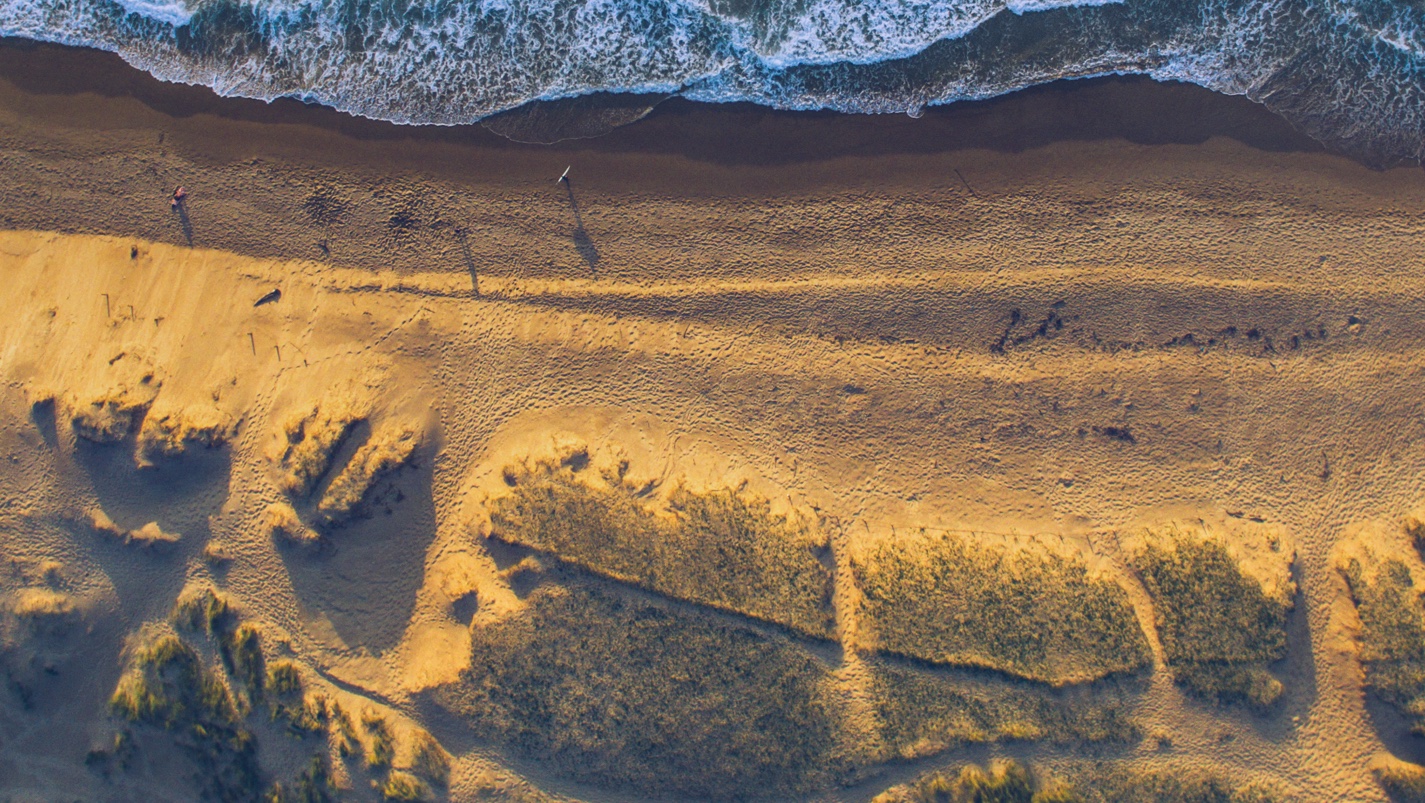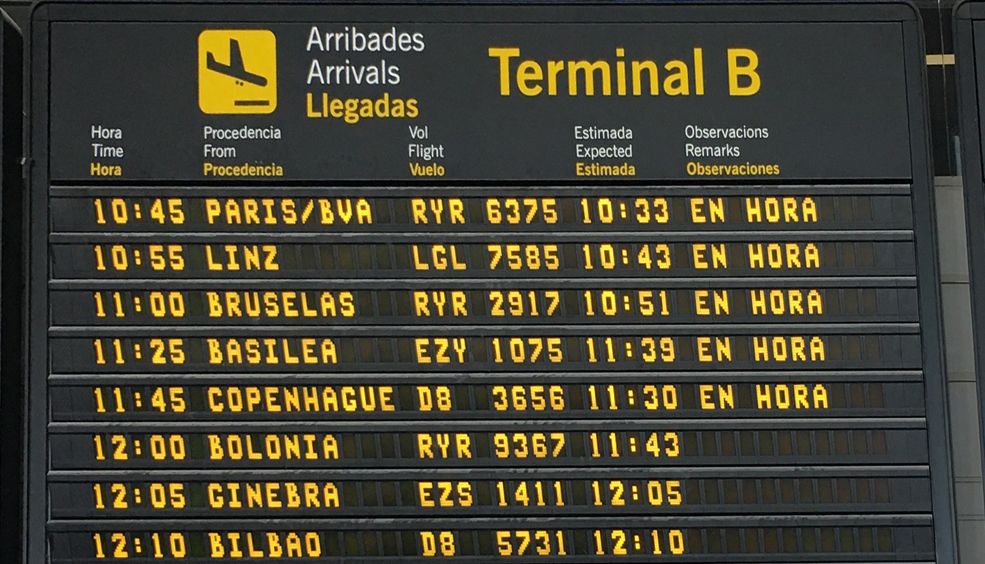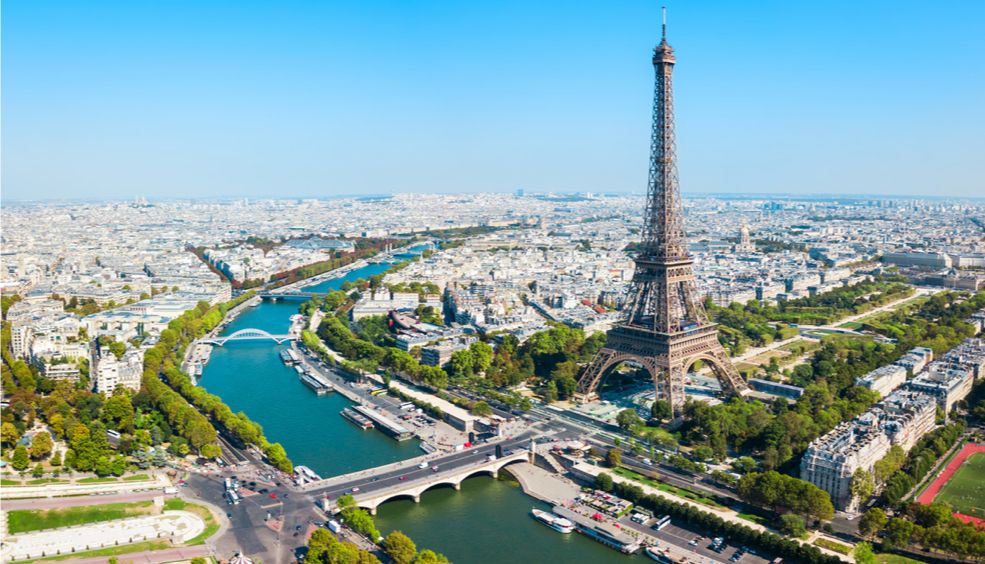IATA code: 3 letters so you don't get lost
BCN, CDG, VIE, LGW.... All frequent flyers (and regular players of Trivial Pursuit) know what these three letters mean. They are IATA codes, in other words, the three letters that identify every single airport in the world.
more infoCinecittá – A Cinema Journey
What do Ben Hur, La Dolce Vita, Gangs of New York and Nine have in common? At first glance, we might think… nothing, but, if we pay attention to the credits, we will see they were all shot at Cinecittá. For many of us, these film studios, located on the outskirts of Rome, are inevitably associated with the name of the great Federico Fellini, but they have also been a privileged host to some of the best moments in cinema history, and the spot where a large number of movie stars converged.
This “Cinema City” was built in 1937 after the previous studios were destroyed in a fire, the cause of which has never been accounted for. The construction project was commissioned to the engineer, Carlo Roncoroni, and the architect, Gino Peressutti. The aim was to build a veritable city of the seventh art, capable of competing with Hollywood itself, which would turn Italian cinema into a worldwide beacon. It should be noted that Mussolini’s Fascist regime was in power at the time and, like Germany, the Italian regime regarded cinema as a powerful propaganda tool.
Fortunately for us, not everything produced there was regime propaganda as it eventually became the place that witnessed the passage of great names in the history of Italian cinema – Roberto Rossellini, Federico Fellini, Vittorio De Sica and Luchino Visconti.
Production came to a halt when the Second World War broke out, and the premises were even put to a different use. Two years before the war came to an end, Cinecittá was occupied by the Nazis and converted into a concentration camp for civilians. It was subsequently bombarded by Allied forces and then turned into a shelter for internally displaced people. All this upheaval led to the loss of most of the technical equipment and machinery once housed in the studios.
After weathering those dark years, Cinecittà gradually evolved into its period of greatest splendour. First, it became the site of grand American productions, featuring such unforgettable movies as Ben Hur,Quo Vadis? and Cleopatra. Second, this was where the careers of the great figures of Italian cinema unfolded. And, the presence of the Americans brought a fresh lease of life and modernity to the Eternal City, as so accurately portrayed in Fellini’s La Dolce Vita.
But all golden ages have their expiry date and the number of large-scale productions began to wane in the seventies, losing out to television. The fact is that the trend of block-buster productions started falling behind, while Italian cinema gradually ceased to be a major player on the world scene. Despite this, the studios can still boast of having been involved in such movies as The Godfather III, by Francis Ford Coppola (1988), The English Patient, by Anthony Minghella (1996), Gangs of New York, by Martin Scorsese (2002), The Passion of the Christ, by Mel Gibson (2004) and the popular television series,HBO Rome (2005-2007).
On a curious note and perhaps as a symbol of our times, Cinecittá is currently the premises of the house and set of Grande Fratello, the Italian version of Big Brother, a contest which has become one of the great television hits.
Cinecittá is now a place of pilgrimage for any film-lovers worth their salt, although what remains to experience is merely an exercise in nostalgic reunion with a period in which cinema was different. It is also a good excuse for taking the whole family along to teach the new generations some cinema history and show them one of its landmark venues. In addition to its sets and some of the most popular set designs, visitors can also see the exhibitions hosted in the Fellini Building.
Nowadays, it might feel weird to stroll through those almost ghostly spaces, tinged with the decadence of time, and try to relive the period in which the great American film stars walked those corridors. What is guaranteed though is the flush of excitement one feels when catching sight of its stunning, iconic entrance.
Ready for a trip to the cinema? Check out your Vueling to Rome here.
Text by ISABELYLUIS Comunicación
Images by Jean-Pierre Dalbéra, Carlo Mirante
more info
Brindisi and Itria Valley
Brindisi, known as the "Gateway to the East" because formerly strategic port of way for the Roman troops and its proximity to Greece and links with Turkey and Albania, is also the starting point for discovering the beauty of the countryside and small villages of his province, that spread along the coast and inland, in the valley of Itria, a journey that reveals the traces of its past with places full of art and history.
Itria Valley spread the provinces of Bari, Brindisi and Taranto and is known as the land of the Trulli (Valle dei Trulli). It is an ancient circular building with a conical shape and stone deck very characteristics of the area, you'll find scattered throughout the valley, but especially well preserved in places like Alberobello or Locorotondo.
There is an extensive network of green routes perfectly entitled to travel by bicycle and discover the beauty of its vast territory, winding through towns like Ceglie Messapica, Mesagne, Ostuni, San Vito dei Normans or Francavilla Fontana.
Brindisi
Brindisi has a great promenade but if you get into its narrow streets, you will discover its beautiful historical center that keeps many surprises, like many churches, Roman monuments and palaces. In Brindisi ends Via Appia, which was the most important road of ancient Rome. The 'Regina Viarum "connected Rome with Capua with its 530 km long, extending from the Porta Sebastiano of Rome to Brindisi, where two columns indicated its end point (nowadays only one of them is preserved). It was ordered to built in 312 BC by the censor Appius Claudius Caecus.
The white city of Ostuni
Called the White City for its picturesque whitewashed houses, Ostuni stands with all its beauty on three hills, giving it the appearance of an ancient Greek city. The city center is enclosed among Aragonese walls that remain from the original fifteen and the defenses surrounding the medieval city. Inside the fortress, there is a fascinating maze of narrow streets that lead to small squares and tangled alleys and stairs leading to the top, where we find the majestic Cathedral, and from where we can admire amazing views of olive trees plains.
Cisternino
On one of the terraces Mugia there is one of the jewels of Italy; Cisternino is one of the most beautiful towns in Italy. Cisternino, the capital of the Itria Valley, has received one orange flag thanks for the preservation of its historical city center. It is delicious to walk among the palaces of Amatialacio and Capece, the tower Normanda or severals ancient churches. Porches, white houses with flowered balconies, narrow alleyways, patios and stairs make the stroll through this delightful old village.
Natural Reserve of Torre Guaceto
The marine protected area and nature reserve of Torre Guaceto is just under 30 miles from Brindisi. Fortunately, this area has remained virtually untouched, apart from the wild constructions that have flooded other parts of the coast. This small oasis of tranquility allows cycling on the roads of scrub and olive trees, diving to admire the beauty of its coral reefs and seabed vegetation or simply enjoy its sandy beaches and crystal clear waters.
Grottoes of Castellana
A walk of about two hours into the depths of this underground world, which runs between stalactites and stalagmites, and that takes you to the White Grotto, a beautiful cave with limestone formations reflected in the underground lake creating a visual spectacle indescribable.
Cisternino by Kiuz | Grottoes of Castellana by tango7174 | Ostuni by Dronkitmaster | Torre Guaceto by Yoruno | Trulli by yellow.cat
Makes you want to go, right? Do it! Check out our prices here!
These are Vueling’s new routes to Paris-Orly
New routes connecting Paris with Spain, Italy, UK, Denmark, Germany, Norway, Sweden, Ireland, Morocco and Malta, since November 2021.
more info




